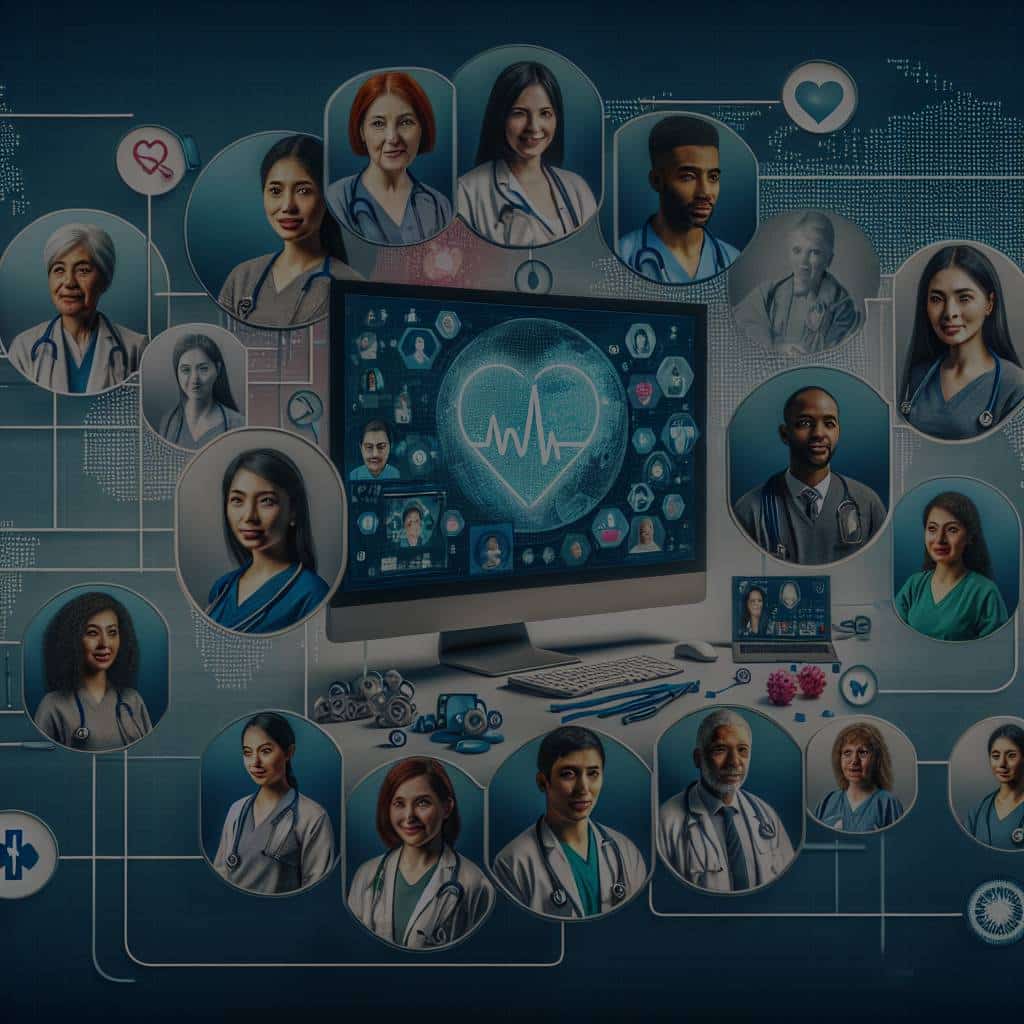How to Optimize Telehealth Services for UK Health Care Providers?

The rapid advancement of technology has revolutionized every aspect of our lives. The healthcare sector, in particular, has seen significant transformations with the advent of telehealth. This modern service approach is not just a trend, but a necessity, especially with the challenges that the pandemic has brought upon the world. With distance no longer a barrier, telehealth provides convenient access to healthcare services for patients. However, adopting this new technology requires a comprehensive understanding and strategic approach. This article will guide UK health care providers on how to optimize telehealth services, ensuring quality care and improved patient satisfaction.
Understanding Telehealth and Its Importance
Before moving towards the optimization of telehealth, let’s take a moment to understand what telehealth is. Telehealth, also known as telemedicine, refers to the use of digital information and communication technologies, like computers and mobile devices, to access health care services remotely.
Topic to read : How to Create a Cost-Effective Digital Marketing Strategy for UK Startups?
As healthcare providers, the main goal is to deliver effective and convenient care to patients. By embracing telehealth, you can offer medical services to remote locations, making healthcare more accessible. It’s an excellent solution for those who can’t travel due to illness, live in rural areas, or simply want to save the time spent in waiting rooms.
Telehealth also has substantial benefits during times of crisis, like the COVID-19 pandemic, where it played a pivotal role in curbing the spread of the virus by offering remote consultations, thereby reducing exposure.
Topic to read : What Are the Key Success Factors for Sustainable Urban Development Projects?
Harnessing Quality and Data in Telehealth
The effectiveness of telehealth lies in its ability to deliver quality care remotely. As such, it’s crucial to invest in quality systems that support efficient service delivery. From reliable internet connections to secure data storage systems, the technology you use will significantly impact the quality of your telehealth services.
Equally critical is how you handle patients’ data. With telehealth, you have access to a wealth of patient data that can be harnessed to improve care delivery. Regular data analyses allow you to understand patient needs better, track progress, and identify areas for improvement. However, remember to prioritize data security to protect patient confidentiality.
Additionally, training your staff to handle this technology proficiently is essential. They should be confident in providing remote care and managing digital tools. Regular training sessions can ensure that your team is up-to-date with the latest technological advancements and can handle them effectively.
Integrating Telehealth into the NHS
The NHS (National Health Service) is at the heart of healthcare in the UK. For telehealth to be effective, it must be integrated into the NHS. This integration will not only help streamline services but also ensure that telehealth is accessible to all.
The NHS has already taken steps towards this integration with initiatives like the NHS App, which allows patients to manage appointments, order repeat prescriptions, and access health records. However, there is much room for improvement.
For a successful integration, the NHS should work closely with health care providers to understand their needs and challenges. Policies should be developed to support telehealth, and adequate funding should be made available for its implementation. It would also be beneficial to involve patients in this process, as their feedback can help improve the service.
The Future of Telehealth in the UK
Like any other technology, telehealth is not static; it continually evolves. It’s essential to be forward-thinking and receptive to changes. The future of telehealth in the UK is promising, but it will require constant adaptation and improvement.
Artificial Intelligence (AI) and Machine Learning (ML) are two technologies that have the potential to revolutionize telehealth. They can be used to predict patient outcomes, provide personalized care, and improve diagnosis. Embracing these technologies can significantly enhance your telehealth services.
Moreover, partnerships between health care providers and tech companies can fuel innovation in telehealth. Such partnerships can lead to the development of advanced telehealth solutions tailored to meet the unique needs of the UK health care system.
Lastly, legislation will play a critical role in shaping the future of telehealth. Regulatory bodies should adapt to this digital transformation by developing laws that support telehealth, protect patient data, and ensure quality care.
In conclusion, optimizing telehealth services is a continuous process that requires strategic planning, constant improvement, and adaptation to changing technologies. As health care providers, your goal should be to deliver remote, yet quality care to your patients. With the right approach, telehealth can significantly enhance the UK health care system, making healthcare more accessible and effective.
Incorporating Social Care into Telehealth Services
The integration of social care into telehealth services is a crucial aspect of delivering comprehensive healthcare in the UK. Telehealth services are not just about treating the physical elements of health but also addressing the social determinants that contribute to overall wellbeing. This approach can enhance the quality of care and improve patient outcomes.
In terms of social care, telehealth can be used in various ways. For instance, it can allow social workers to perform remote consultations, assess patient needs, and provide necessary support. This can be particularly beneficial for elderly patients who require assistance with daily activities but can’t easily travel to social care centres.
Moreover, telehealth can facilitate better coordination between healthcare and social care providers. A shared digital platform can enable real-time communication and data sharing, ensuring that everyone involved in a patient’s care is on the same page. This seamless communication can prevent potential misunderstandings, reduce delays, and ultimately lead to better patient care.
However, incorporating social care into telehealth services is not without challenges. Confidentiality issues, technological barriers, and resistance from staff and patients are some of the potential obstacles. Therefore, it’s vital to address these issues proactively. Providing adequate training, ensuring data security, and promoting the benefits of telehealth can help overcome these hurdles.
The Role of Telehealth in Patient Monitoring and Safety
When it comes to patient monitoring and safety, telehealth has a significant role to play. With the help of remote patient monitoring technologies, healthcare providers can keep track of their patients’ health in real-time, without them having to leave their homes. This can be especially beneficial for patients with chronic conditions like diabetes or heart disease, who require regular monitoring.
Telehealth can also ensure patient safety by reducing the need for hospital visits, thus minimizing the risk of infections and other hospital-related complications. During situations like the COVID pandemic, this aspect of telehealth proved to be a lifesaver, as it reduced potential exposure to the virus.
Furthermore, telehealth can help improve medication adherence. Virtual reminders can prompt patients to take their medications on time, thus improving treatment outcomes. Also, telehealth allows for real-time communication between patients and care providers, enabling immediate intervention if any safety concerns arise.
However, this doesn’t mean that telehealth is without risks. Issues like technical errors, data breaches, and misdiagnoses can pose threats to patient safety. Therefore, it’s imperative to implement robust security measures, provide proper training to staff, and develop guidelines for virtual care.
Conclusion
In the face of an ever-evolving healthcare landscape, telehealth services stand as a beacon of innovation and accessibility. Capitalizing on this technology requires health care providers in the UK to adopt a strategic approach, focusing not only on service delivery but also on integration with social care, patient safety, and constant technological advancements.
Despite the challenges posed by confidentiality, technological barriers, and the need for legislative support, the potential benefits of telehealth far outweigh the hurdles. With its capacity to deliver remote care, improve patient monitoring, and integrate health and social care services, telehealth is poised to revolutionize the UK health system.
As we march forward into the future, it is imperative for health care providers to embrace change, continually adapt, and strive for improvement. By doing so, we can ensure that telehealth services remain a vital pillar in the UK’s quest for accessible, effective, and quality healthcare for all.
